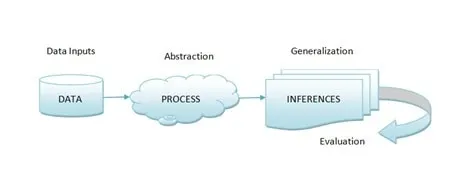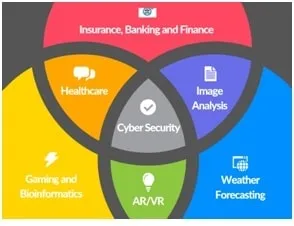“Artificial Intelligence, deep learning, machine learning — whatever you’re doing if you don’t understand it — learn it. Because otherwise you’re going to be a dinosaur within 3 years.” -Mark Cuban
What this essentially means is that a machine can be considered to learn if it is able to gather experience by doing a certain task and improve its performance in doing similar tasks in the future. When we talk about experience, it means past data related to the task. This data is an input to the machine from some source.
As in Figure(1), the basic machine learning process can be divided into three parts namely a) Data Input: Past data or information is utilized as a basis for future decision-making b) Abstraction: The input data is represented in a broader way through the underlying algorithm and c) Generalization: The abstracted representation is generalized to form a framework for making decisions

Applications of machine learning

Wherever there is a substantial amount of past data, ML can be used to generate actionable insight from the data. Some of the prominent areas of applications for ML include Banking and Finance, Insurance and Healthcare. Besides this, ML also collaborates very well with some of the fields including, Weather Forecast, Cyber Security, AR/VR, Gaming and Bioinformatics.Figure(2) depicts the same.
Successful machine learning implementation
Since the data is going to play a prime role, one should give utmost importance to the phases relating to data including acquisition and its method, data cleanliness, any pre-processing, identifying the proper data structure suitable for the processing, data distribution, data transformation, and so on. In other words, the accuracy of the implementation is solely depending upon the accuracy of the data being involved. Any manual errors with respect to data handling would lead to disaster. The model used for ML implementation should be as simple as possible.
Surveys and cases
Let us now look at the survey reports on ML.
According to GlobeNewswire, the value of the global ML market is likely to reach USD 117B by the end of 2027 at a CAGR of 39%.20% of C-level executives (across 10 countries and 14 different industries) have adopted to ML as a core technology in their business, as per a survey by Mckinsey. At the same time, MemSQL has found that 74 % of respondents have considered ML and AI as indicators having the potential to transform their job and industry. Another survey by Thinkful has predicted that the average salary for data scientists having the ability to apply ML would multiple in the future. Algorithmia re-iterated the same.
The following table provides the list of few prominent companies that have already employed ML in their businesses.
Table1: Impact of machine learning applications
| Company | ML application area | Significance | Reference |
| Netflix | Used ML in their personalized TV shows & movies for their subscribers | Saving of $1 billion in 2017 | Forbes |
| Amazon | Used ML for their logistics | Reduction of average response time from 50 min to 15 min | Forbes |
| Implemented in Deep Learning for medical diagnostics | Increase of accuracy to 89% when compared with pathologists at 74% | Google’s AI Blog | |
| Also implemented in Google’s translator application | Increase of accuracy from 55% to 85%. | Mike Schuster | |
| Microsoft | Prediction of stock market fluctuations | Increase of accuracy to 62% | Microsoft |
Some future trends of machine learning
Telecommunications: With the arrival of 5G technology in telecommunications, multiple devices would become part of a network thereby increasing the network traffic. In order to provide seamless integration with devices connected with a network, ML can be employed with IoT to achieve the best possible results. Due to the multiplicity of cyber threats day by day, ML can be integrated as a part of threat detection systems to make them work automatically.
Hyper Automation: Many automation systems are currently available to carry out recursive tasks in computing (E.g., Search Engine). Hyper automation will be one step ahead to introduce an extra layer of ‘robotic intelligence’ that makes the processes even smarter than automation. AI combined with ML plays a key role in hyper-automation. Hyper automation requires the selection of the right data/tool and an ML algorithm that lets bots identify the right patterns in data to develop insights from pattern recognition. Machine learning tools are useful for extending the capabilities of automation.
Reinforcement Learning: Reinforcement learning is a member of the ML family wherein the system takes care of the training by itself based on its previous experiences and outcomes while applying the knowledge on similar tasks. Many gaming applications are constructed using this approach.
Cloud-hosted intelligence: This combined technology using cloud computing and ML would help to develop programs for making decisions that will improve over time without human intervention and the need for additional programming. Due to this, a large volume of data can be stored at a reduced cost.
Conclusion
In a nutshell, ML is the technology of the future from the business point of view. It is time to create more ML specialists by incorporating it as a part of Computer Science/IT courses offered by educational institutions.
This article has been published from the source link without modifications to the text. Only the headline has been changed.













